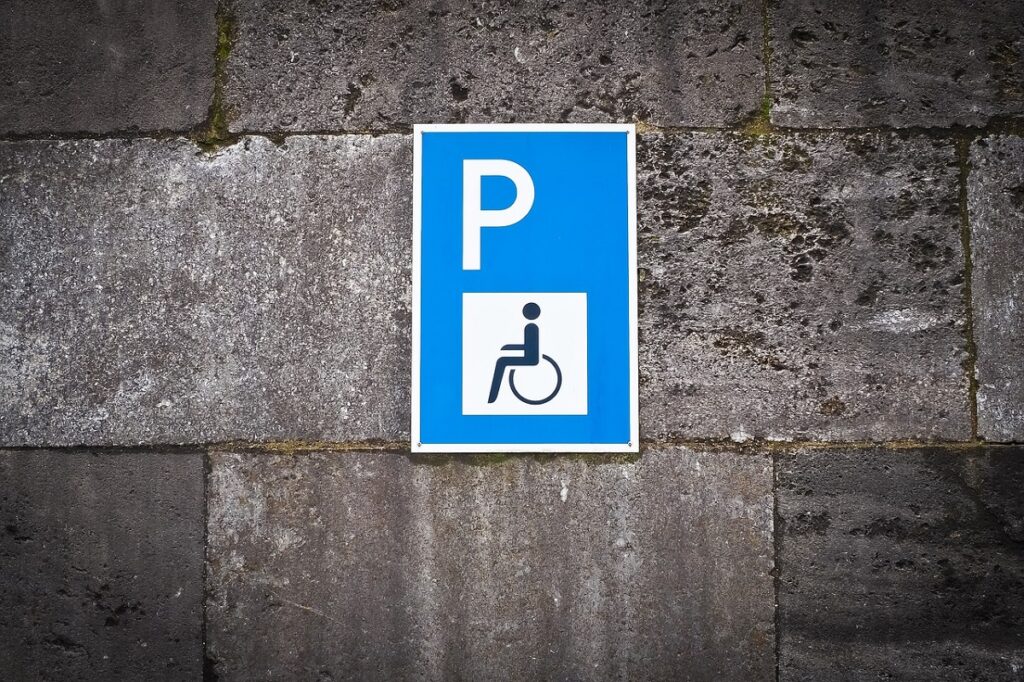Handicap parking spots are extremely important facilities for disabled drivers. Without the correct number of appropriately designed handicap spaces, disabled people might struggle to find parking near their destinations. Good quality handicap spaces empower disabled people to get out and about and live the lives they want to live.
Handicap spaces are protected under federal and state laws. Handicap parking authorities and police implement handicap parking laws across the country. People who misuse disabled parking spaces are usually caught and dealt with, often receiving a hefty fine.
But is it possible for people to misuse a handicap space by mistake? Can a person use a handicap space without realizing that it is a space reserved for disabled drivers? It seems possible that this could occur if the handicap space in question was not clearly signposted. This raises some questions…
How can you tell if a parking bay is for disabled drivers? Do handicap parking spaces need to be signposted? If so, how are handicap parking spots signposted? Is there a specific handicap parking sign recognized nationwide? What laws deal with handicapped parking signage in America?
Below, we will answer these, and many more, crucial questions about handicap parking spots.

What Laws Deal With Handicap Parking Bay Signage In America?
The Americans With Disabilities Act (ADA) is the federal law that deals with all aspects of handicap parking in America, including handicap parking spot signage requirements.
Several jurisdictions across the country also have some laws of their own regarding handicap parking signage that complement the ADA.
What Details Of Disabled Parking Spaces Are Covered By The ADA?
The Americans With Disabilities Act covers the following details of disabled parking spaces:
- The number of disabled parking spaces required in a given place.
- The types of disabled parking spaces.
- The dimensions of each type of disabled parking space.
- The location of disabled spaces in relation to the buildings and amenities they serve.
- Parking space signage and markings.
How Can You Tell If A Parking Bay Is For Disabled Drivers?
You will be able to tell if a parking space is for disabled drivers by the appearance of the space. Disabled spaces have distinguishing markings on and beside them.
All disabled spaces in America should have a sign that indicates that they are for disabled drivers. The sign will contain the International Symbol of Accessibility, which is a white wheelchair. Several jurisdictions also require that their disabled parking spaces should be painted blue with the wheelchair symbol painted in white.
Wheelchair disabled spaces will also have a white striped zone on one or both sides of the parking spaces. This is to provide room for wheelchair access.
How Many Types Of Disabled Parking Bay Are There?
There are three types of disabled parking bays in America:
- Accessible parking spaces for cars
- Accessible parking spaces for vans (one-sided entry)
- Accessible parking spaces for vans (two-sided entry)
Do All Handicap Parking Spots Need To Be Signposted?
Yes, under the Americans With Disabilities Act, all disabled parking spaces must be clearly signposted. The ADA does not say that spaces must be painted blue with the International Symbol of Accessibility painted in white, but several jurisdictions around the country do insist on this in their own disabled parking regulations.
What Type Of Signs Can Be Used On Handicap Parking Bays?
According to the ADA, disabled parking signs must contain the International Symbol of Accessibility, and be at least 60 inches off the ground. Signs on van parking spaces must be labeled with the words “Van Accessible”.

How Many Disabled Parking Bays Are Parking Lots Required To Contain?
Parking lots in the United States are legally required to contain a certain number of disabled parking spaces. This number must include at least one Accessible Parking Space for Vans.
The required number of disabled parking spaces increases in line with the size of the parking lot. For example:
- Parking lots containing 1–25 spaces must have at least one disabled space that is accessible for vans.
- Parking lots containing between 501–1000 spaces must reserve at least 2% of total spaces for disabled parking permit holders, and this number must include 2–4 accessible parking spaces for vans.
Who Can Use A Handicap Parking Spot?
The only people who can use handicapped parking spaces are people who hold a disabled parking permit. This can include people who are disabled, people who care for a disabled person, or organizations that transport disabled people. Disabled spaces can only be used when the disabled person for whom the permit is intended is traveling in the vehicle. If you do not have a permit, you can obtain one via telemedicine.
Featured image by MichaelGaida on Pixabay
